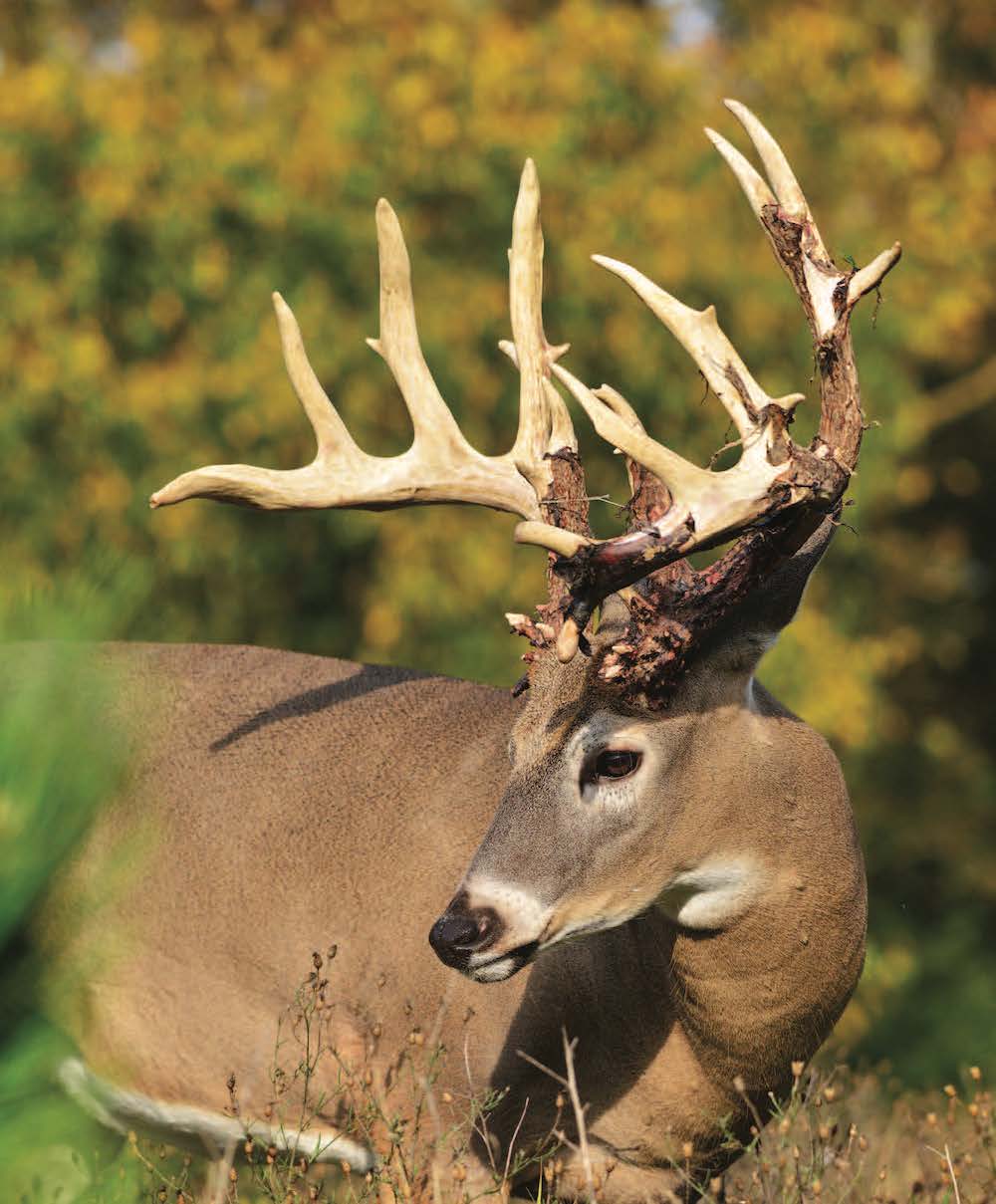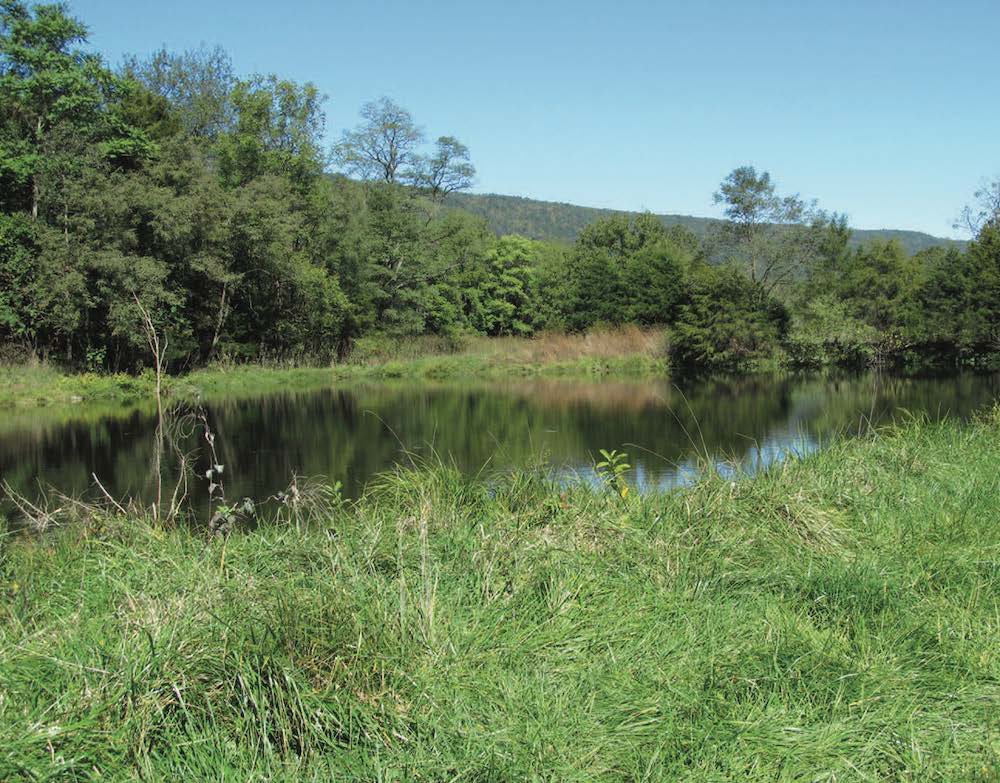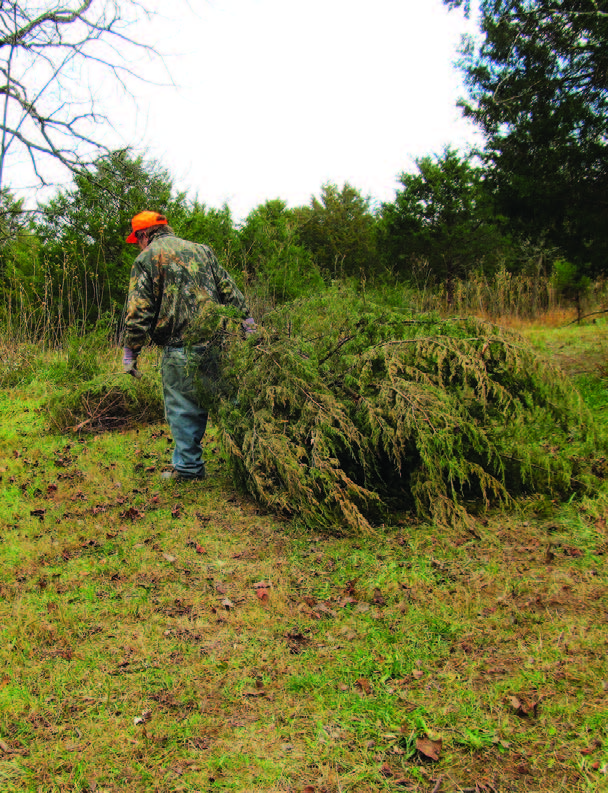8 Valuable Enhancements that Compliment Food Plots
By Gerald Almy
 The best hunting setups on my land, as at many small properties, are spots where you first see your quarry when it’s almost in range. However, the stand I hunted during a cold November day on my 117 acres was a bit different.
The best hunting setups on my land, as at many small properties, are spots where you first see your quarry when it’s almost in range. However, the stand I hunted during a cold November day on my 117 acres was a bit different.
It was almost like a western situation, reminiscent of whitetail hunts I’d taken in Wyoming or Montana, where you could see for long distances. So, I was glassing farther away and glimpsed a buck I hoped to encounter almost a quarter-mile distant. He was a wide, heavy 8-pointer. He hung out almost exclusively on my land and seemed to sense that I didn’t shoot young bucks. Therefore, he showed himself fairly often. But he was no longer one of those young bucks that I didn’t shoot. His thick neck — which blended seamlessly into a deep chest, sagging belly, blunt face, sway back and massive 8-point rack — confirmed that status. I first saw him where I’d expected: — easing out of a sanctuary I keep off limits. It’s a rugged 30-acre patch that consists of brush, shrubs, wind-fallen trees and young conifers. The herd had already experienced some pressure from my neighbors during the opening of archery and crossbow seasons, and I figured he’d hole up in that rough, secluded area.
I didn’t see the buck again for a few minutes, but soon he emerged from a patch of mixed shrubs and white pines I’d planted to provide an approach route to a small pond. The weather had been hot and dry, and the old boy was thirsty. I saw his rack and part of his body there, but he was too far for my crossbow.
Soon, he stopped where I’d expected he might — at a cluster of apple trees that were dropping their sweet fruit. Then he disappeared into a stand of mature trees. I lost him there, but it was soon clear he had worked through a staging area I’d enhanced, consisting of a feathered edge between the woods and an Imperial Whitetail Clover plot. Then he made the final move I was waiting for, stepping into the corner of the field.
The crossbow’s arrow found its mark, concluding one of the most enjoyable hunts on my land — enjoyable because of the buck’s impressive 22-inch-wide rack and the Western feel of the outing, using binoculars, spotting the deer far away and watching him slowly work through various habitat areas into point-blank range.
The experience was fulfilling on another level. A food plot had brought the buck within range, but the hunt also showed the value of the many other improvements I’d made. It made clear you need more than food plots to let a buck grow old and spend most of his time on your land. In one afternoon, that 8-pointer used a sanctuary, a cover strip that allowed a daytime approach to a pond, the water source, an apple grove and a mix of open and thick cover in a staging area that had been improved via shrub planting and chainsaw work. And he used all those enhancements within minutes before emerging into the final ingredient that kept him on the property — a nutritious Whitetail Institute food plot.
Of course, other elements kept him there, too. In this article, we’ll look at those habitat improvement projects and the aforementioned extras in more detail, hopefully illustrating that you can’t develop a quality deer property with food plots alone. They are vital, but they can’t stand by themselves. And if you don’t supply other habitat elements, your neighbor might.
Providing these extras, or tweaking and enhancing habitat features already on your land, are particularly important if, like me, you only own a small parcel of 40 to 200 acres. Careful management and packing the property with everything possible entices bucks to stay and improves the quality of that animal. And that’s vital for optimal antler growth by letting deer age to 3, 4 or even 5 years, where possible. Of course, time limits many folks from establishing all these extras. I’m lucky that doing these projects is my “job” as research for articles. But time-challenged managers should try to work in as many as possible, one at a time. And do them well, rather than rushing or cutting corners, trying to complete every enhancement at once. A few well-done projects are more beneficial than a dozen half-baked improvements. Before deciding which projects to undertake, study topo maps and Google Earth photos to get a full understanding of the lay of your land, where things are lacking and which areas lend themselves to specific improvements. Through trail cameras, you probably already have a feel for how bucks use your land. Work that knowledge into planning where to make enhancements. Perhaps a low spot that drains several hollows or hillsides would make a good pond site. A remote thick cover area would be good for a sanctuary. An open hillside could nurture a dozen fruit trees.
Also consider the surrounding topography and vegetation and where deer will be coming from so that the improvement will be where deer will use it. It makes no sense, for example, to put a water source in the middle of an open field. A mature buck will never use it or do so only at night. If you locate it near bedding cover, however, and provide a strip of cover to provide secure access, older deer will likely use that water hole. Also consider how you will approach some of these enhancements if you plan to hunt near them, considering sun angle and wind direction. By adding those elements in strategic locations, you’ll more accurately pattern how deer travel as they use the enhancements. Here are eight valuable projects to consider undertaking to complement your food plots.

1. Add Water
You don’t need an entire pond. Sometimes, small water sources tucked in cover are better for mature bucks. But make no mistake, a deer needs several quarts of water a day. If he doesn’t find it on your property, he’ll go somewhere to find it — and might end up hanging from a rafter in your neighbor’s barn. Use a children’s pool, pond liner material, a cattle water trough or a special deer watering setup. Sometimes, you can simply use logs and rocks to dam up a creek so it holds water year-round. If you need to place the water source in an open area, provide a secure travel route to it by planting sorghum or something more permanent such as conifers or switchgrass.
2. Enhance Natural Forage
This can encompass many projects. Hinge-cutting low-value trees is a good place to start. Animals can then feed on the tops that continue to grow at their level, eating the leaves, twigs and buds.
Releasing edible shrubs, fruit trees and brambles that are crowded and shaded by other trees is also worthwhile. Trimming back grape vines or pulling them lower where deer can reach them are also worthwhile steps, which are easy to accomplish in an afternoon.
 3. Plant Nut and Fruit-Bearing Trees
3. Plant Nut and Fruit-Bearing Trees
Choose fast-growing oaks, such as sawtooth hybrid white oaks, if you don’t have enough hard-mast trees on your property. Plant some oaks with early acorn drops and other late-maturing varieties.
Fruit trees are not essential, but considering how bucks on my property use them, I would never dream of not having a variety available. Good choices include pear, apple and plum. I still grow them to keep deer content and focused on my land 365 days a year. These fruits are sweet treats that are packed with vitamins and minerals, such as phosphorous and potassium. Put fruit trees where they’ll get at least five hours of sunlight, with slopes preferable to bottoms. Be sure to plant at least six trees so they will cross-pollinate. Tree shelters will protect the lower trunks of young nut and fruit trees from rubbing bucks and other critters.
4. Give them Minerals
No matter the quality of your native forage and how many food plots you plant, a deer still needs various minerals, vitamins and micronutrients that aren’t in that forage. You can solve this by creating one or, preferably, several mineral licks in provinces where they are legal. Imperial Whitetail 30-06 provides the proportions of calcium, phosphorous and other micronutrients and minerals needed for lactating does and bucks growing antlers. Find several spots near cover, and start trial licks. Dig down 6 to 12 inches, loosen up the soil and mix the bag of minerals with it, after first clearing any grass, leaves or sticks. Then continue to replenish the sites that get hit hardest. Avoid checking the sites except to refresh them, and wear rubber boots when you do so.
 5. Build Bedding Areas
5. Build Bedding Areas
You might not have to add these. Many properties have prime areas where older bucks bed on ledges and shelves, in swampy or remote areas, or storm-damaged locations with fallen trees and jumbled brushy cover. If you lack these, you can create them in several ways. First, select an isolated, remote spot bucks would like on a hill or bench, on the leeward side and preferably near the center of your property. Then clear-cut or fell several low-value trees, allowing some to fall on top of each other. If there aren’t many such trees, cut them or large branches, and also some cedars from nearby, and drag them in.
Don’t make woods bedding sites too cluttered. Deer must move in and out freely and have a primary access route and one or two secondary escape paths. If you live in a cold climate area, be sure to add a few pines, spruce or cedars in clusters to block the wind and snow and provide thermal protection during winter. If you can’t do this chainsaw work, hire a logger who will work with you cutting firewood or pulpwood in small, mostly clear-cut blocks. The harvested areas will allow sunlight to penetrate, encouraging species such as blackberry, greenbrier, grapes and honeysuckle to grow. Have him leave the tops, or push them into windrows or piles to channel deer in the direction you want them to travel, such as toward a food plot.
6. Control Predators
Control of predators is vital for two major reasons. The first is obvious. Coyotes and bears can cause significant fawn losses that will affect overall deer populations on a property. They also kill adult deer, including trophy bucks. Second, when they have a choice, deer favor areas where they can feed unmolested and feel relatively safe moving without being chased constantly by predators. Your land will be more attractive if it has fewer predators than surrounding areas.
7. Control the Deer Population and Hunt Smart
You can’t stockpile more deer on a property than the habitat will allow. Trying to do so is a losing proposition. And chances are you will be overrun with does, which might dominate the prime areas and sometimes nudge out bucks.
In cooperation with adjoining landowners, if possible, enact a plan to keep doe and buck populations as close to balance as possible. That means harvesting more does and passing up younger and middle-aged bucks in most cases. Having land that is not overcapacity brings many benefits. You will attract mature bucks and sustain a balanced healthy herd that will not damage the native habitat. The rut will also be more intense.
A second aspect to smart hunting will help you get the most out of your food plots: Always consider environmental, cover and hunting pressure situations. Don’t overhunt a location, don’t hunt it until the wind is right and plant strips of cover to shield your approach where necessary. Also, don’t do too much plinking, ATV riding and other activities that might make deer feel like they need a quieter place.
8. Create Sanctuaries
This leads to the final ingredient; besides food plots, any property should have, particularly smaller properties: a sanctuary or perhaps several. These are areas where no human activity occurs, except to retrieve a wounded deer. The more remote, rough, thick, swampy or steep these locations are, the better. They can be as small as a few acres or up to half the property if the situation dictates.
Conclusion
Food plots offer one of the best ways land and wildlife managers can boost deer on their properties. But many extras will also help bucks feel secure, stay well-nourished and want to stay on your land throughout the year.
That heavy mature 8-pointer, among other bucks, proved the value of those extras to me.
